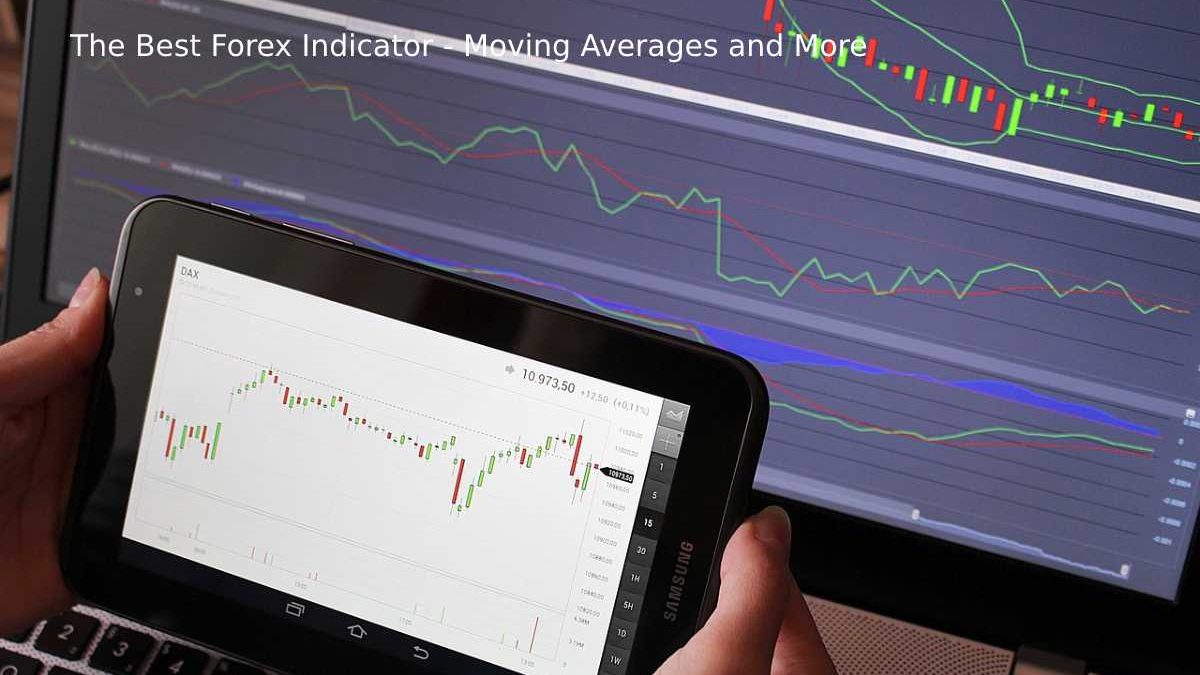Table of Contents
The Best Forex Indicator
The Best Forex Indicator: Forex indicators are crucial when trading on the forex market.
Many forex traders use these indicators daily, which helps them determine when to buy or sell on the currency market.
Every technical or fundamental analyst should be familiar with these forex indicators because they are a crucial component of technical analysis.
1. Moving Averages
- Every trader should be familiar with the moving average concept since it is crucial. The central bank and international corporations drive the currency market.
- Consequently, it is crucial to comprehend what is happening on a larger scale.
- The average price of the most recent number of candles, which represents the overall sentiment of the price, is one of the forex indicators known as the moving average.
- When the price is trading above the moving average, buyers are in charge of setting the price.
- The price is controlled by sellers, though, if it is trading below the moving average.
- As a result, if the price is above the moving average, you should concentrate on buying transactions in your trading plan.
- One of the best forex indicators a trader should be familiar with is this one.
2. Relative Strength Index
- Another category of forex indicators is the relative strength index, which has levels from 0 to 100. This indicator shows potential price reversal areas.
- When the price climbs over 70 during an uptrend, it signals a negative market reversal.
- Similar to the last example, a buoyant market reversal is indicated if the price drops below 30 levels during a downtrend.
3. MACD
- The Coverage Average Convergence and Divergence, or MACD, is one of the greatest used forex indicators.
- A histogram and an exponential moving average make up the trading indicator MACD. This indicator’s primary use is to determine price divergence.
- While the price and MACD’s visible difference suggests a market reversal, their concealed divergence suggests a market continuation.
4. Bollinger Bands
- John Bollinger, a forex indicator, developed the Bollinger Bands indicator. Moving averages make up the bulk of Bollinger bands.
- The upside and downside have two standard deviations, while the middle has a traditional moving average.
- Overall, this trading indication offers a trustworthy trading entrance and is quite simple.
5. Stochastic
- Early in the 1950s, the stochastic momentum indicator was created. This indicator’s primary goal is to pinpoint the overbought and oversold areas.
- Finding a potential profit-taking area in a trading strategy is common for traders.
- As a result, they utilize this forex indicator to identify the area where the price is most likely to turn around. The Stochastic indicator oscillates between 0 and 100.
6. Ichimoku Kinko Hyo
- One of the forex indicators, Ichimoku Kinko Hyo or the Ichimoku Cloud, has components to build a complete trading strategy.
- This indicator’s several components assist traders in recognizing every facet of the market.
- The first component of this indicator that aids in understanding the market context is the Kumo Cloud.
- The general trend is negative if the price is trading below the Kumo Cloud and bullish if it is trading above the Kumo Cloud.
7. Fibonacci
- Due to its relationship to every living thing in the universe, Fibonacci is a trading instrument that displays the most precise market direction.
- Its most crucial component is the golden ratio of 1.618, or the Fibonacci tool. Traders use this ratio in the forex market to spot market reversals and profit-taking zones.

